MÜNZING
Effects of Filtration on MÜNZING’s Next Generation FOAM BAN® Defoamer Technology in Aqueous Metalworking Fluids
By James Sullivan, IFL Global Technology Director | TLT CMF Plus November 2021
Foam minimization during the use of aqueous metalworking fluids (MWFs) is required in order to maintain effective lubrication, heat removal, and prevent overflow of sumps. For these reasons, MWF formulations commonly contain defoamers, which control the foam as it forms by disrupting the interfacial energies that stabilize the foam bubbles. Although the defoamer is expected to perform well initially, the defoaming properties should also persist over an extended period of time. Filtration, which is important during fluid use to ensure cleanliness, is one factor that is purported to affect the long-term persistence of a defoamer.
Münzing’s traditional FOAM BAN® 3D siloxane defoamers have a decades-long track record of providing superior foam control, including persistence to prolonged shear and filtation. Unlike standard silicones (e.g., polydimethylsiloxane) which are linear polymers, the 3D technology is based on siloxane polymers that are linked together (“cross - linked”) to form a 3-dimensional structure. The 3D structure, along with an optimized emulsifier package, impart stability to the defoamer droplets which allows the defoamer to maintain effectiveness upon filtration.
Münzing’s Next Generation 3D Siloxane Technology Based Defoamers
Foam control in MWF operations has become increasingly challenging as fluids are:
•
Used at higher pressures
•
Used in smaller sumps
•
Expected to last longer
•
Reformulated to meet new regulatory and safety requirements
For these reasons there has been a perpetual need for better defoamers. In order to overcome these new challenges, Münzing developed the next generation 3D siloxane technology that is exceptionally resistant to shear providing drastically more persistent foam control. Münzing looked to the success of past products and used them as a road map to develop a breadth of new products based on the next generation 3D siloxane technology, The FOAM BAN® HP900 and 1800 series
(Figure 1).
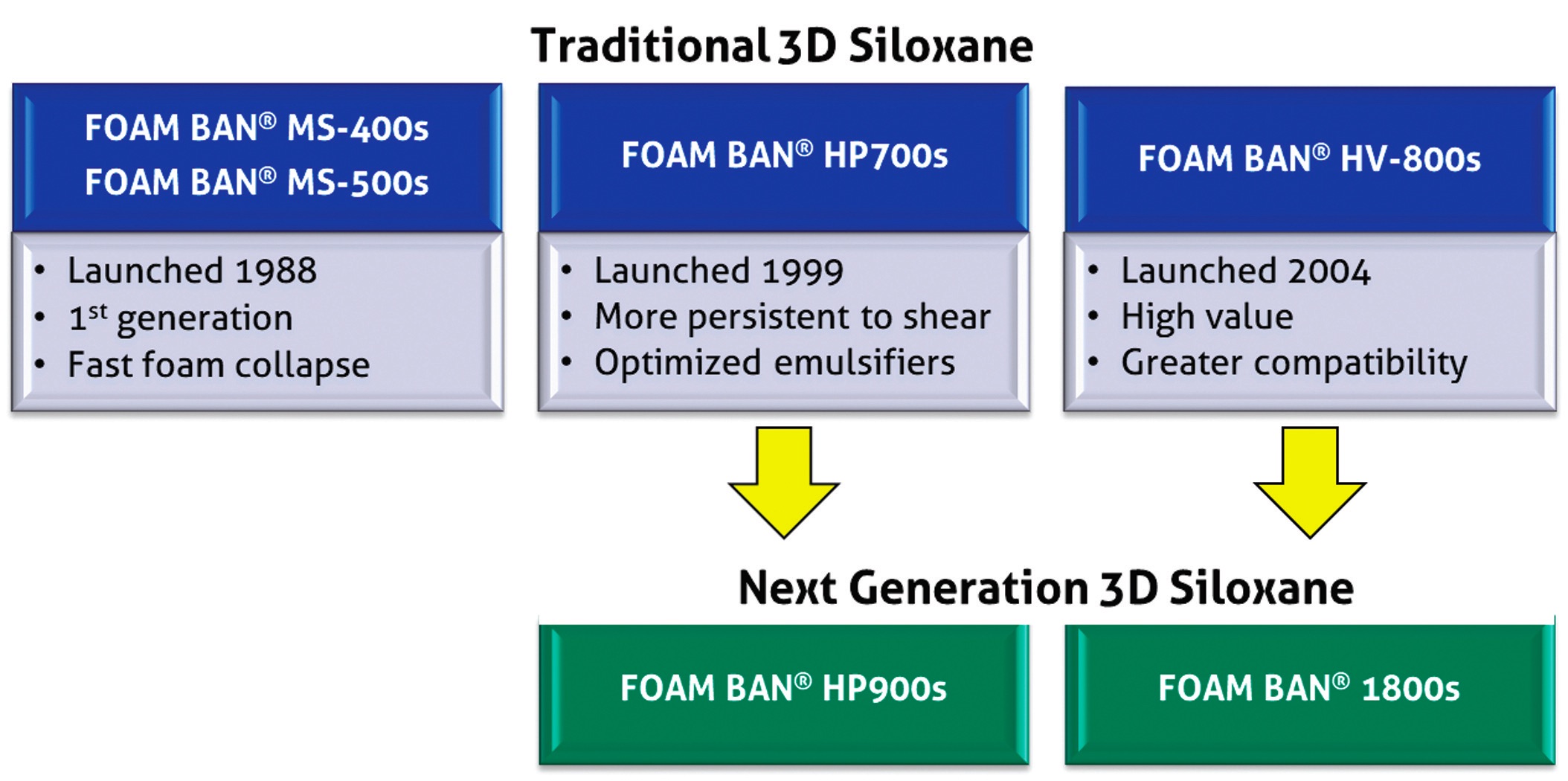 Figure 1
Filtration and Defoamer Performance
Figure 1
Filtration and Defoamer Performance
It is important to understand how the new defoamers based on the next generation 3D siloxane technology perform upon filtration to ensure they meet the market needs. This includes evaluating how different filter media (material of construction) and pore sizes affect the defoamer performance. This performance was evaluated on a laboratory scale using a recirculation method with filters placed in-line after the pump
(Figure 2). Filter materials with different polarities were tested that had pore sizes of 10 μm and 30 μm.
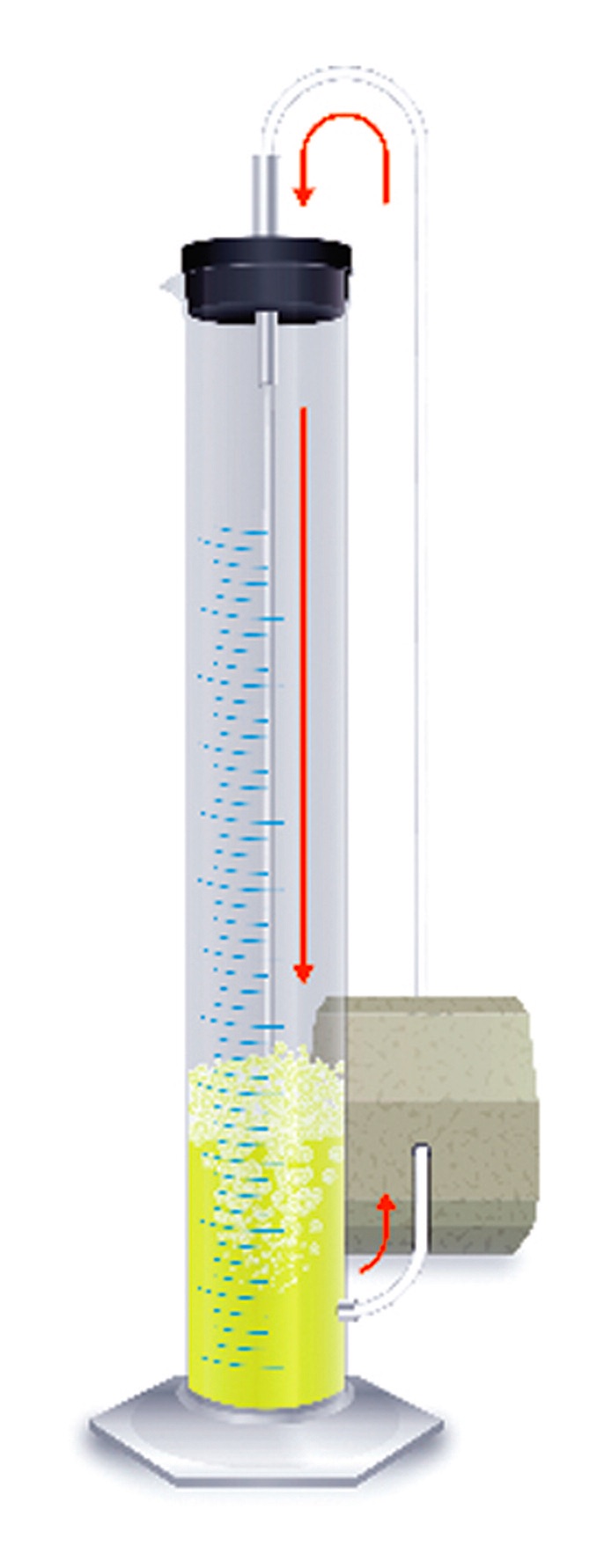 Figure 2
Figure 2
•
Nylon filter media (hydrophilic)
•
Polypropylene filter media (hydrophobic)
Defoamers were added to the MWF concentrate at a dosage required to provide adequate foam control without a filter present. The MWF was then diluted to 5% in DI water. The recirculation test was then run for 2 hours or when a total volume of 1000 mL was reached.
Example: FOAM BAN® HP900 Series
FOAM BAN® HP900 Type defoamers were compared to FOAM BAN® MS-500 Type defoamers that are based on traditional 3D siloxane and a standard organo-modified (OMS) defoamer. The results of the recirculation tests with nylon and polypropylene filters are shown in
Figures 3 and 4 respectively.
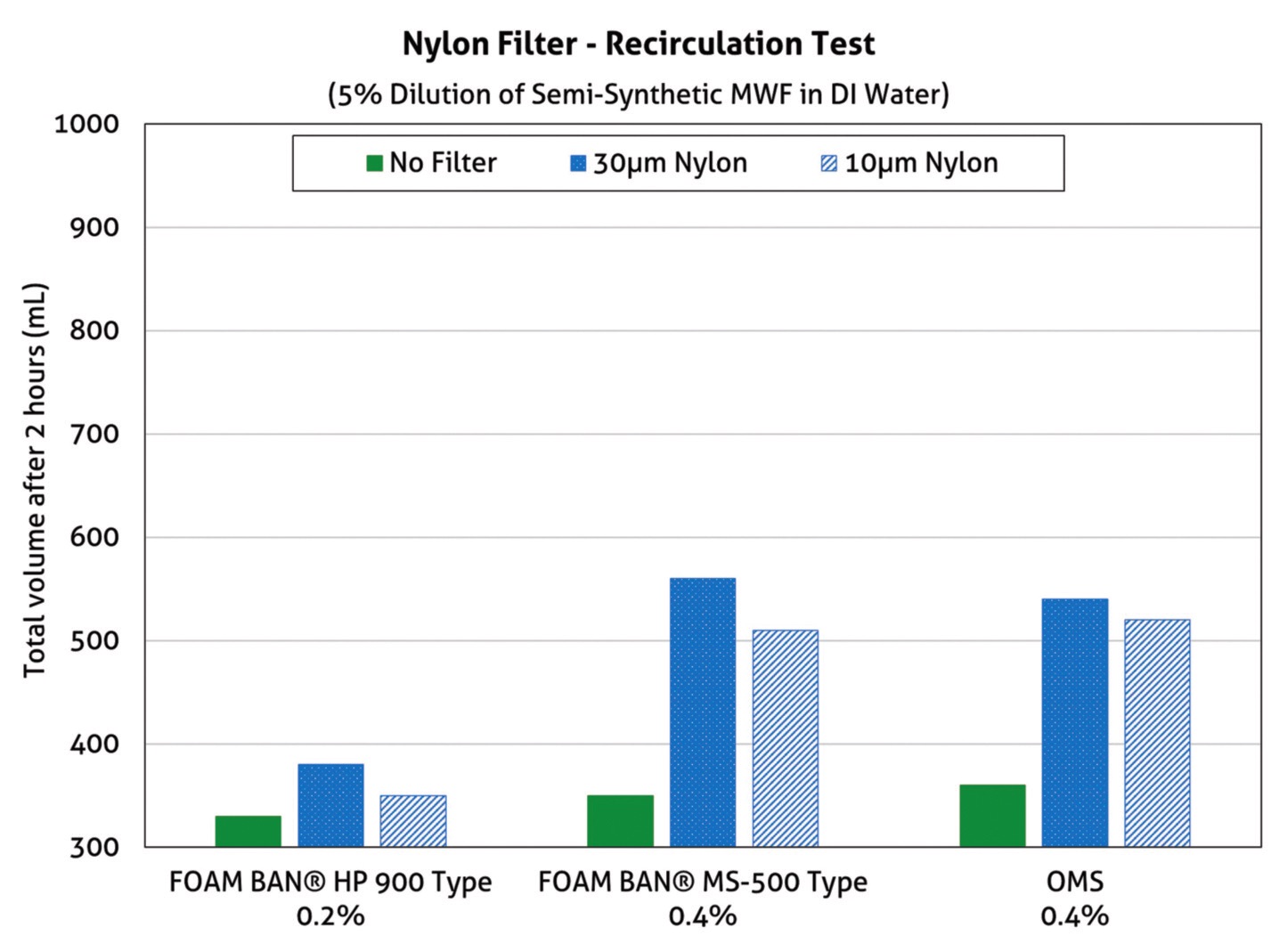 Figure 3
Figure 3
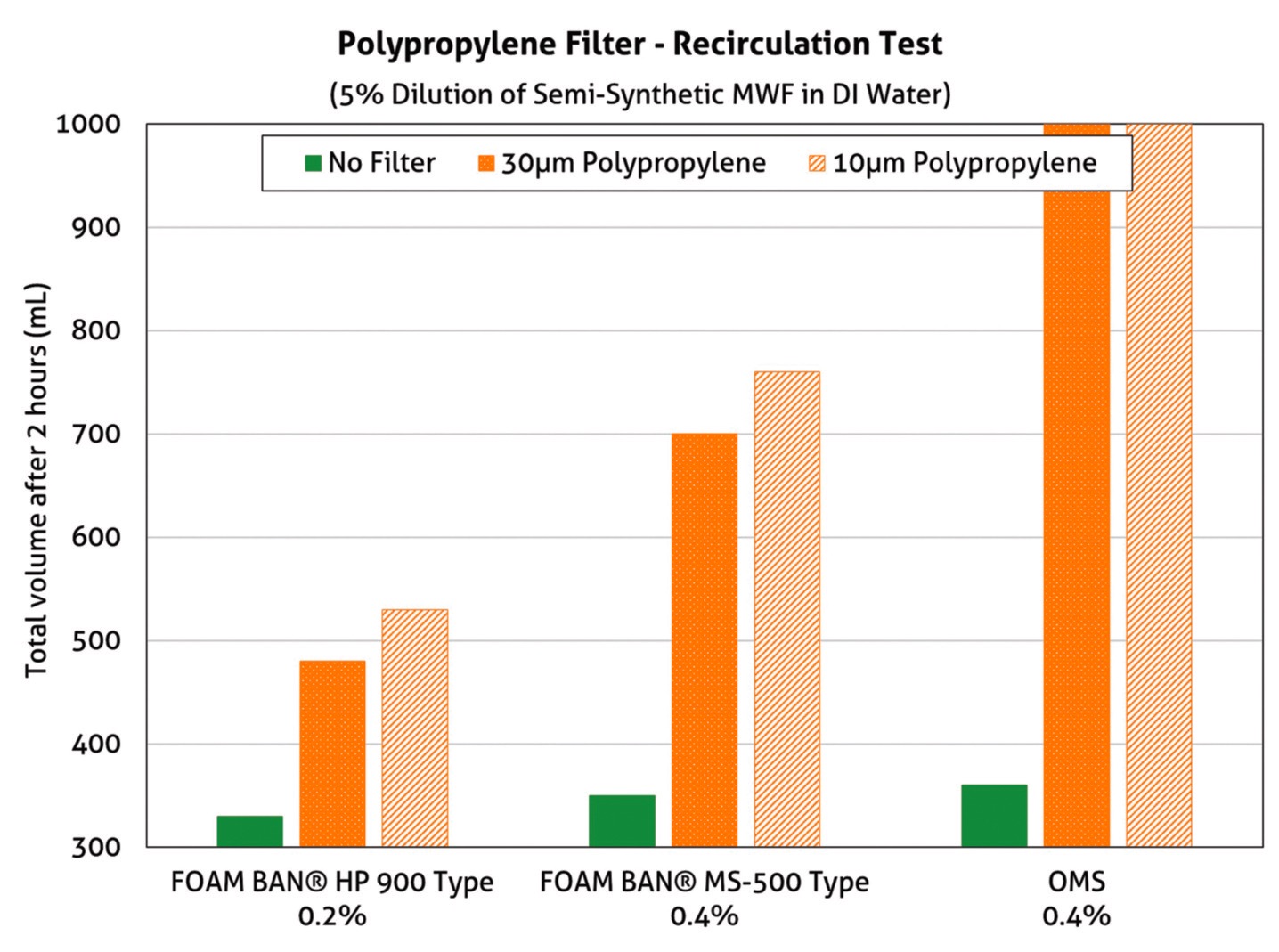 Figure 4
Conclusion
Figure 4
Conclusion
•
The FOAM BAN® HP900 Type defoamers, based on the next generation 3D siloxane technology, provided superior defoaming and persistence with both nylon and polypropylene filters at half the dosage compared to the FOAM BAN® MS-500 Type defoamers and OMS defoamer.
•
Filter media type had a greater impact on defoamer performance than the filter pore size.
•
A greater reduction in defoamer performance is observed for polypropylene filters compared to nylon
(Figure 5). This is consistent with the common feedback Münzing has received from the field.
•
The difference in defoamer performance between the filter types may be attributed to the difference in surface energies between polypropylene (non-polar) and nylon (polar). It is surmised that siloxane based defoamers, being non-polar, would have less affinity for adsorption on the nylon filter.
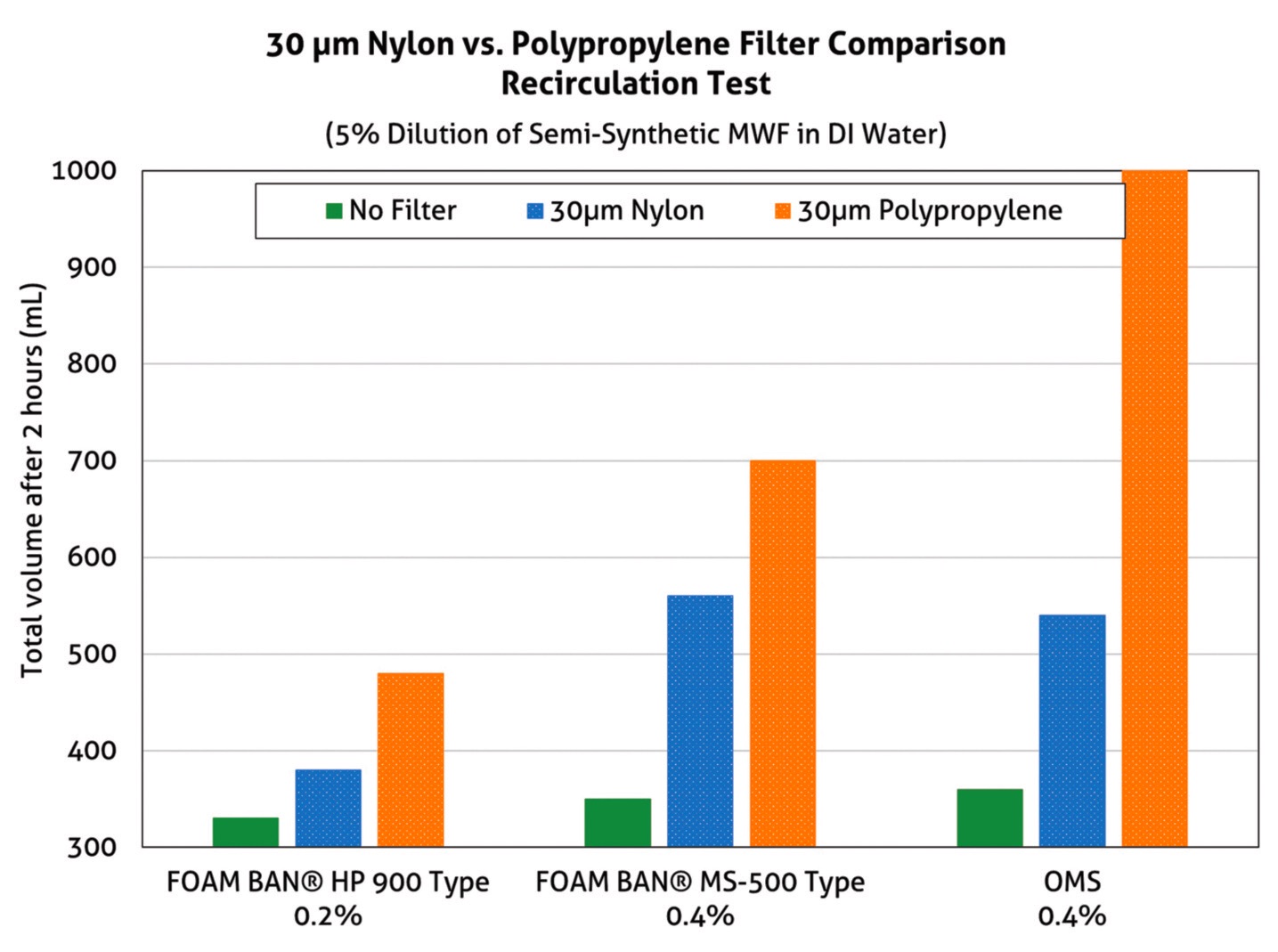 Figure 5
Figure 5
Münzing is a service driven company, and this example represents the type of testing Münzing’s R&D and technical service laboratory performs. We welcome the opportunity to provide you with an improved foam control solution by evaluating the new product lines or tailor making a new defoamer to achieve optimal performance.